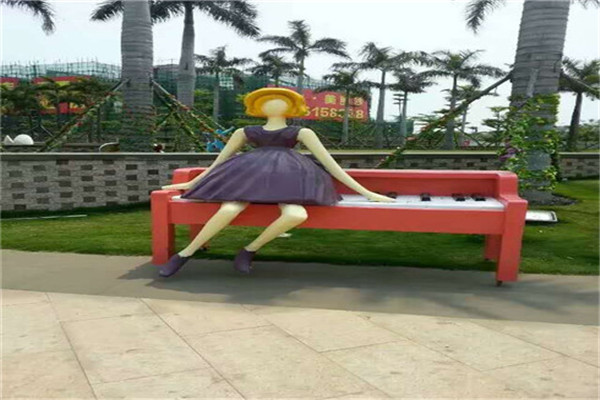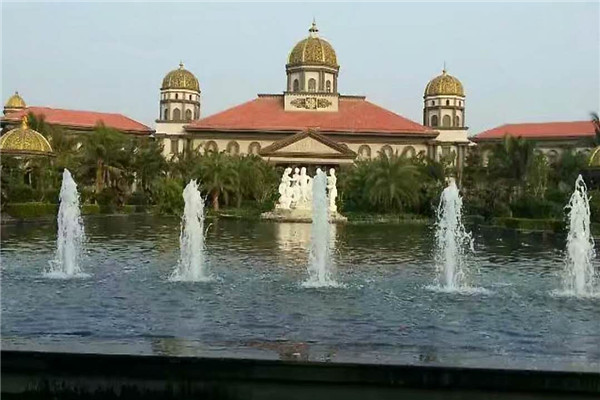At present, most of the most influential sculptures in China and the West are made of copper. For example, Rodin's "The Thinker", "The Bronze Age", and "The Statue of Liberty", the world's top sculptures are mostly made of copper. The lines are suitable for sculpture because of the texture, plasticity, unlimited specifications, and rich color texture of copper, which are also jade sculptures The effect that wood carving and stone carving can't achieve is that jade carving can only make very small works because of the limitation of materials. Because of the limitation of wood carving technology, there is no precedent for large outdoor sculptures. The inheritor, whose bronze carving has opened a new chapter in the 5000 year history of copper.

1. Traditional green sculpture shaping: directly pruning the plants with garden art. There are simple geometric shaping (such as sphere, cube, pyramid, cylinder), complex geometric shaping (layered shaping, spiral shaping, etc.), animal shaping and various peculiar shaping (automobile shaping, aircraft shaping, abstract and free shaping, etc.). Common plants include pine and cypress, privet, boxwood, national locust, elm, etc. 2. Grafting: taking a certain plant as the rootstock, grafting plants with different impressions on it, and then making artistic processing of its shapes, such as polychrome chrysanthemum bonsai, polychrome rose bonsai, polychrome peach, polychrome plum, polychrome crabapple, etc. Such as cliff chrysanthemum, tower chrysanthemum, animal shaped chrysanthemum, etc. 2.1 Single plant green sculpture refers to the sculpture formed entirely by one plant or one plant with multiple colors or by grafting multi-color plants. The sculpture has a long viewing period and simple operation. For example, tree sculptures can be kept for a long time only by special pruning, without considering flower changing and water spraying, and the maintenance management is simple. 2.2 Double plant green sculpture refers to the sculpture shaped by two different kinds of plants. The sculpture has a long viewing period and a strong three-dimensional sense, and usually uses the complementary and mutually reinforcing advantages of two plants for modeling. Such as evergreen and deciduous plants, broad-leaved and coniferous plants, lianas and herbs, as well as different colors, species, branches and leaves, such as leaf color, flowers and fruits, branches and stems. 2.3 Mixed plant green sculpture refers to sculpture with three or more kinds of plants. The sculpture has a short viewing period and complicated operation, but it is highly ornamental and lifelike. The common ones are large three-dimensional sculptures, some animal shaped sculptures elaborately composed of flowers, leaves and fruits of different plants according to design requirements, such as peacock, red crowned crane, panda, etc; Or symbolic sculptures with certain cultural connotation and city image, such as idiom allusion sculptures (learning to walk in Handan, dancing at the smell of chickens), Olympic seal, football World Cup, etc.

Marble, granite, Hui'an stone, Qingtian stone, Shoushan stone, Guicui stone and other materials are generally used for stone carving. Granite and marble are suitable for carving large statues; Qingtian stone and Shoushan stone are rich in color, which are more suitable for small stone carvings. There are many ways to make stone carvings. According to the nature of stone materials and the habits of the carvers, stone carvings can be roughly divided into two types: first, traditional methods. Conception, composition, modeling and stone carving are all done by individuals alone. For large-scale carving of lines, the horizontal and vertical lines shall be drawn on the stone, the grid shall be made to take materials, and the simple measurement and positioning method shall be used for carving. The second is to adopt a new process, that is, first make a clay sculpture, turn it into a plaster statue, then take the plaster statue (model) as the basis, rely on the point shaped instrument, and then carve it into a stone statue.

Components are reusable software modules oriented to software architecture. Chengmai Abstract sculpture It is a reusable software component that can be used to construct other software. It can be encapsulated object classes, class trees, some functional modules, software frameworks, software architecture (or architecture), documents, analysis pieces, design patterns, etc. In 1995, Ian Graham defined components as follows: Abstract sculpture manufactor Component refers to an object (interface specification, or binary code), which is used for reuse, and the interface is clearly defined. Hainan sculpture component appears as a logic tight program code package with a good interface. For example, Ada's Package, Smalltalk-80 and C++'s class and data type can all belong to the component category. However, the operation set, procedure and function can not become a component even if they can be reused. Developers can develop new application systems by assembling existing components, so as to achieve the purpose of software reuse. Software component technology is the key factor of software reuse, and also the focus of software reuse technology research.




